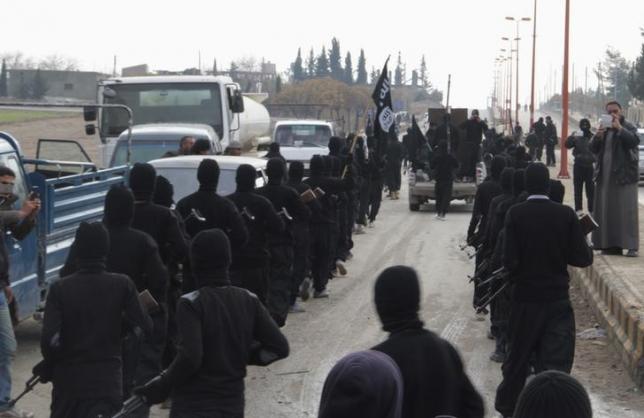In the last several years, Afghanistan has been frequently portrayed as a hotbed for radical Islamist movements. One of the examples is the al-Qaeda terrorist network and it has known since 1999s and become one of the most violent extremist groups. There are dozens of other terrorist groups but among them Islamic State (IS) also known as the Daesh terrorist group appeared in Afghanistan in 2014, adding a new and significant dimension to the dynamic.
Now that the Taliban seized power in 2021, Daesh poses a serious threat to the Taliban government not only militarily but as an emerging rival for state sovereignty. Daesh is targeting the Salafi Jihadists to improve its rank and engage in non-stop work among the youth. One of its suicide bombers that killed Taliban governor for Balkh province was a young boy.
Apparently, Daesh in Afghanistan is very much dissimilar from those in Iraq and Syria. Perhaps, the main challenge that Daesh has been presenting to the Taliban government goes beyond the IS’s organizational life cycle in the Middle East.
Taliban are also among the Daesh
The Taliban emerged in 1994 in the southern Kandahar province and the intention was to restore a minimum of peace and security for the Afghan civilians who were suffering from anarchic violence and civil war which plagued the country since the Soviet withdrawal from Afghanistan.
The Taliban were mainly Pashtuns, who mainly graduated from madrassas and religious schools and seminars based in Pakistan. These schools were almost funded and supported by the Gulf Arab countries, and the Taliban were able to immediately grow into a larger social movement and a military force.
However, in 2001, following 9/11 events and US aggression, the Taliban fled back to Pakistan but after 2006 they regrouped and fought until they defeated the republic government backed by the western countries. Foreign forces also withdrew. Now they are in power.
But within that period, many Taliban commanders and fighters joined the Daesh group. They were not happy with the leadership, especially when they signed an agreement with the US.
At the moment, when the Taliban are ruling the country, the appearance of Daesh in Afghanistan is not a surprise to many. Daesh has been there since 2014 and carried several deadly attacks even during the republic system.
Taliban and Daesh relations
As we said, Daesh appeared in 2014 under the very nose of US forces. Many local news agencies at that time reported that a group of people with black flags and several horses had appeared in Kunar province. Women and children were also among them. But neither the republic system nor the foreign forces took it seriously. They kept ignoring the fact. Even the then Kunar governor denied the report instead to launch a thorough investigation.
Daesh was so powerful that in December that year, (2014) was able to push the Taliban out of southern Nangarhar province and in early 2015 Hafiz Saeed was appointed as governor of IS’s so-called Khorasan province.
Daesh made several military victories in that time and by late 2015, it appeared in western, southern and northern Afghanistan as well.
At the same time, Mullah Omar, the supreme leader and the founder of Taliban announced death in 2015, providing more ground for Daesh to work among the Taliban to gain their trust. As a result, Abdul Rauf Khadim, ex-Taliban commander for Helmand province, had been acknowledged by Dash as its deputy governor. Khadim was put in Guantanamo Bay, and he was one of top members of the Taliban.
Taliban killed Daesh fighters
The Taliban spokesman Zabiullah Mujahid said that its security forces targeted IS hideouts in the fifth, sixth and eighth areas of Mazar-e-Sharif city in northern Balkh province.
In a tweet message, Mujahid described the operation as a substantial strike against the group, saying the operation lasted until late Friday night.
“Several ISIS fighters were killed and only one Islamic Emirate security personnel sustained an injury,” Mujahid said without specifying the number of Daesh fighters who were killed in the operation.
It comes just days after Daesh claimed responsibility for the attack on the Tabyan Cultural Center, which resulted in the death and injury of scores of journalists in the city of Mazar-e-Sharif.
Meanwhile, Almersaad, a pro-Taliban media reported that Taliban forces killed IS foreign militants from Uzbekistan and Tajikistan in Mazar-e-Sharif operation. The agency identified the dead including IS senior figure “Ustad Qais.”
IS militants have been behind some brutal attacks in Kabul over the past months, including the attack on the Russian Embassy, the Diplomatic Mission of Pakistan, and a hotel that accommodated Chinese citizens, according to the United Nations Assistance Mission in Afghanistan (UNAMA).
Moreover, the group has also launched brutal attacks on educational institutions and target gatherings of top Taliban officials.
US says IS could hit West from Afghanistan
In the most unprecedented statement, a senior US general said that IS based in Afghanistan will be able to target US citizens in Europe and Asia within six months. General Michael Kurilla, head of US Central Command said ISIS-Khorasan (ISIS-K) – the Afghanistan branch of the Islamic State terror group – has been growing in strength.
“It is my commander’s estimate that [ISIS-K] can do an external operation against US or Western interests abroad in under six months with little to no warning,” he told the Senate Armed Services Committee.
He furthered; “It’s much harder for them to be able to do that against the (US) homeland,” he added.
IS also claimed responsibility for the Kabul airport attack in August 2021 during the evacuation process that left over 170 civilians killed and 13 US soldiers. Nearly three hundred were also wounded in the bombing.

 OPINION2 weeks ago
OPINION2 weeks ago
 DIPLOMACY1 week ago
DIPLOMACY1 week ago
 DIPLOMACY5 days ago
DIPLOMACY5 days ago
 ASIA1 week ago
ASIA1 week ago
 DIPLOMACY6 days ago
DIPLOMACY6 days ago
 MIDDLE EAST2 weeks ago
MIDDLE EAST2 weeks ago
 MIDDLE EAST1 week ago
MIDDLE EAST1 week ago
 ASIA6 days ago
ASIA6 days ago





















